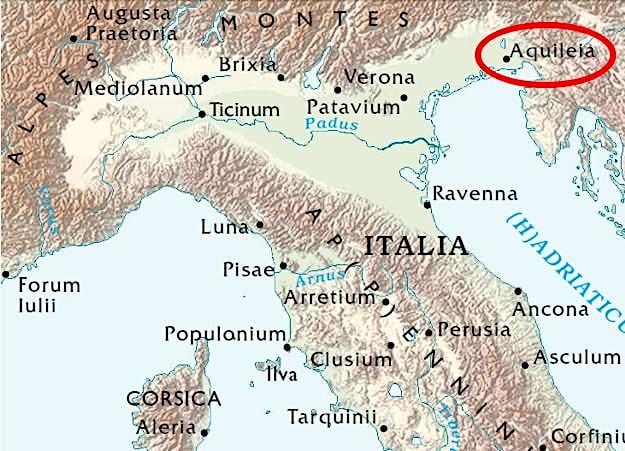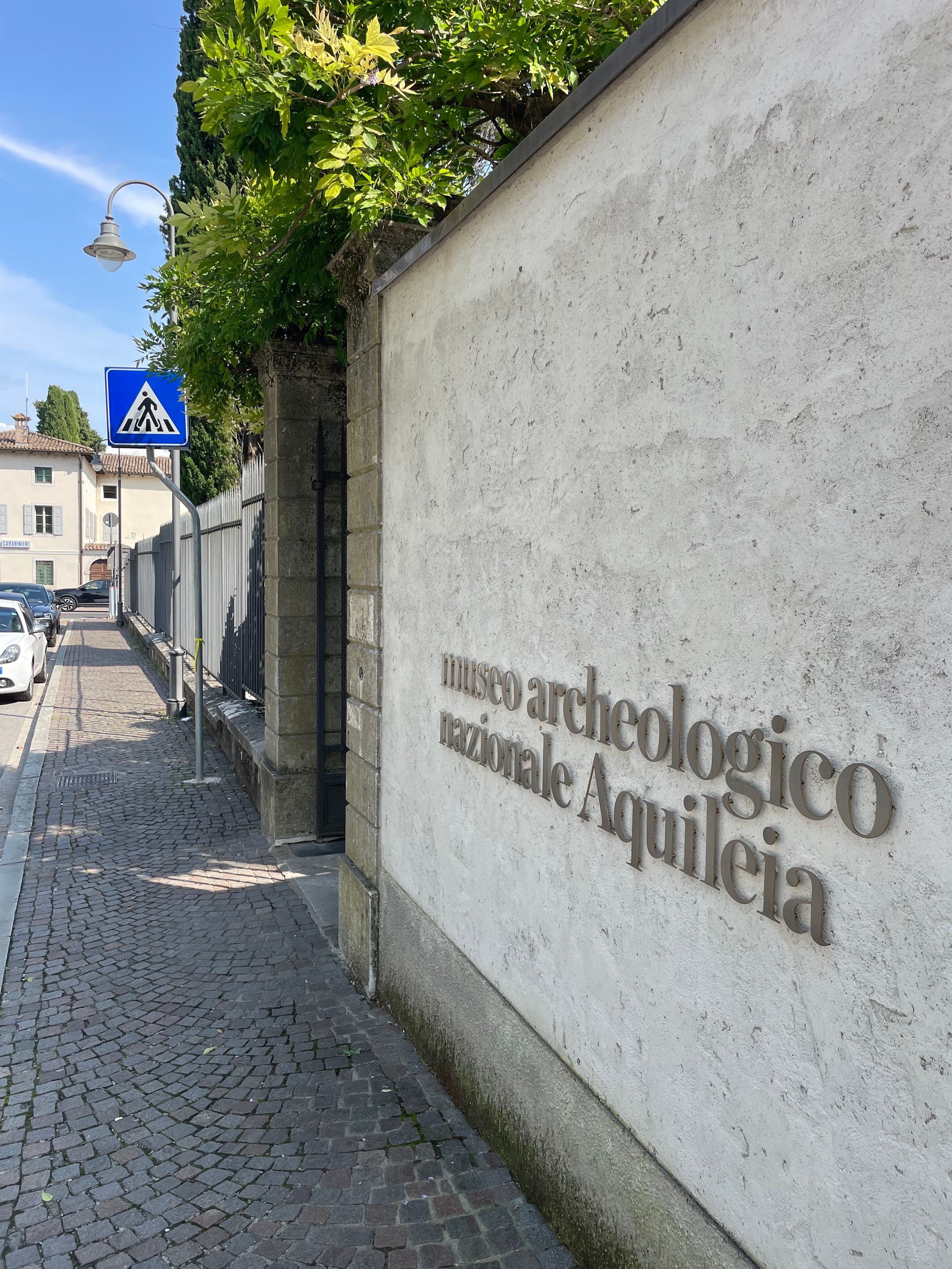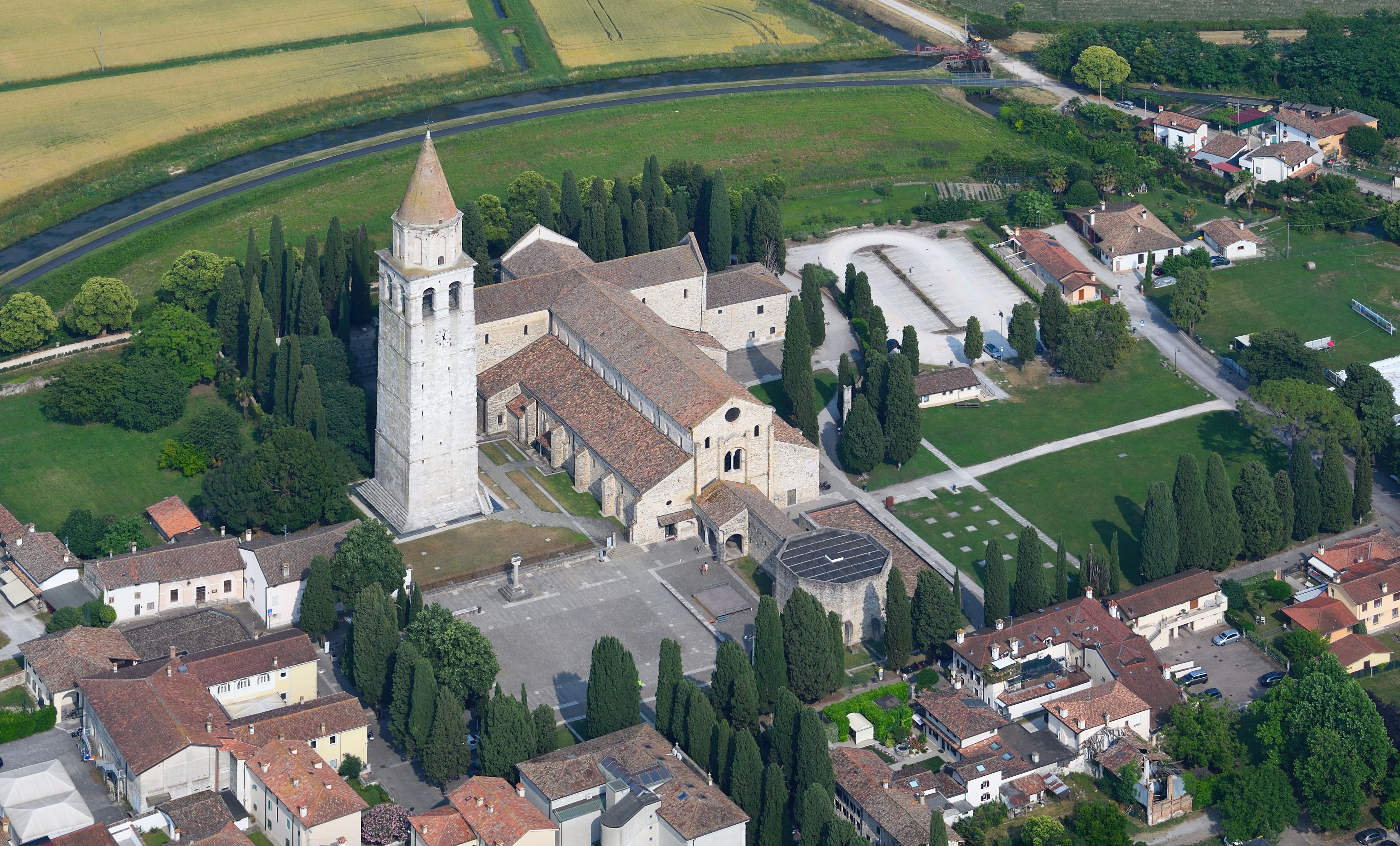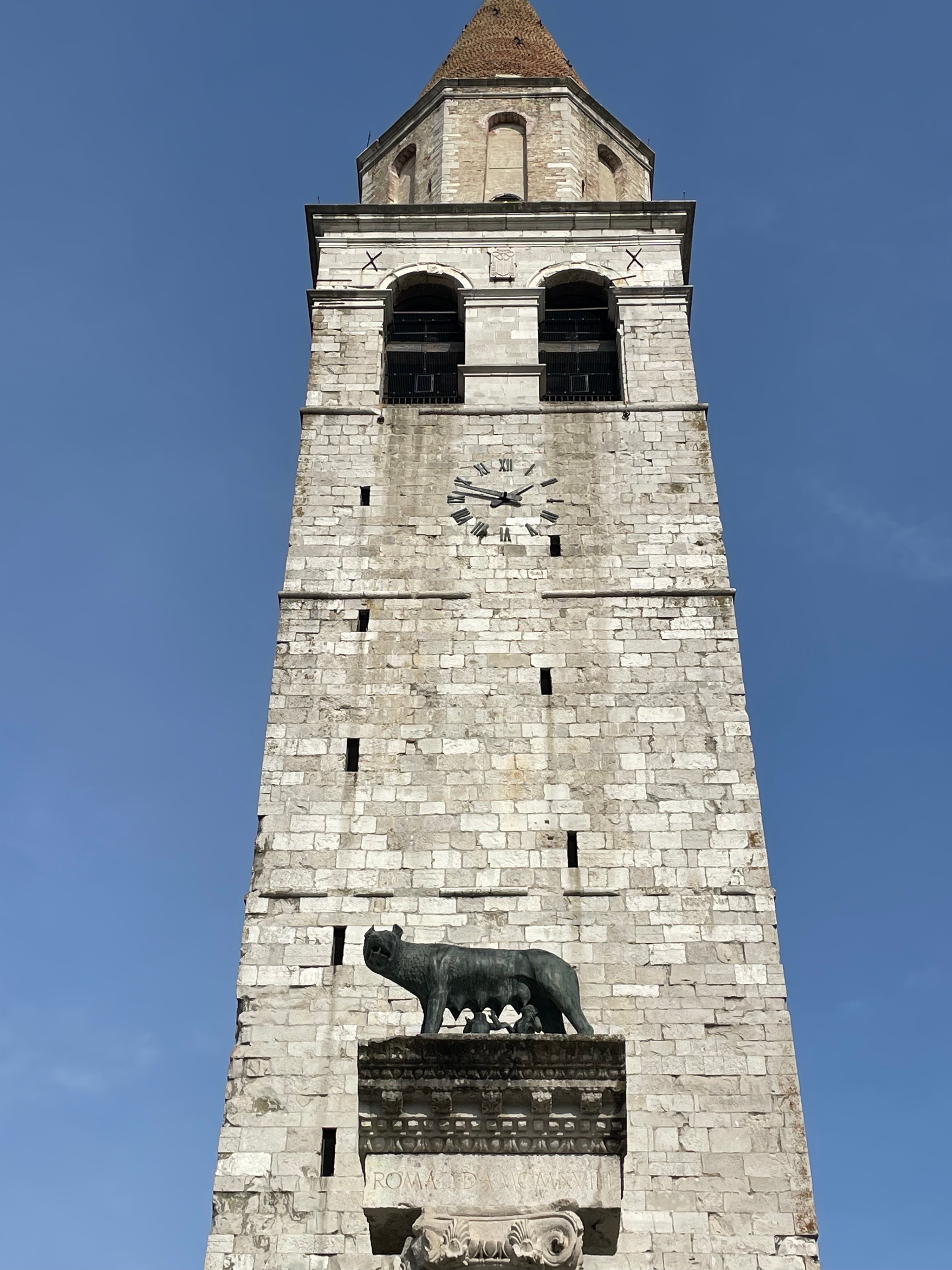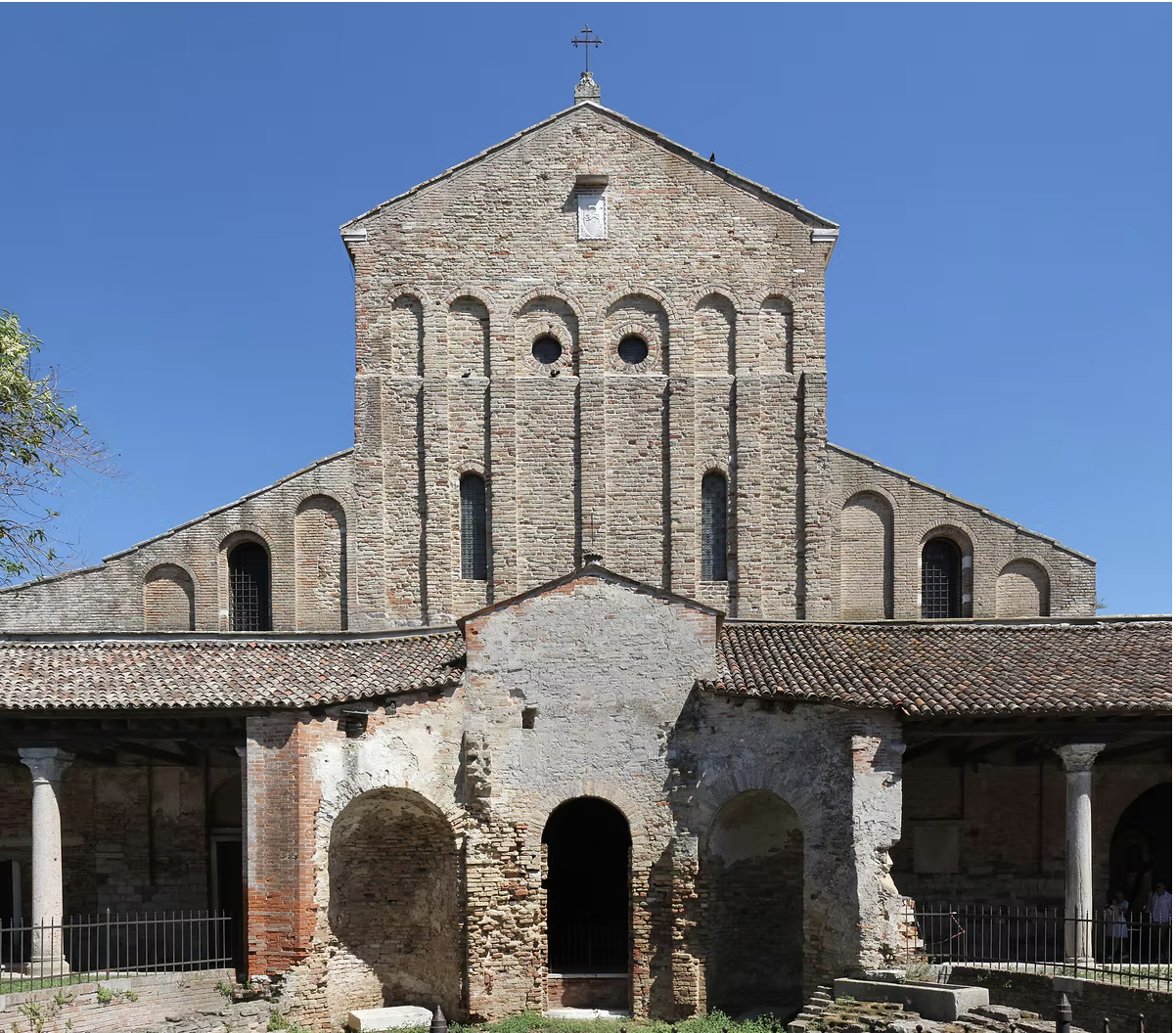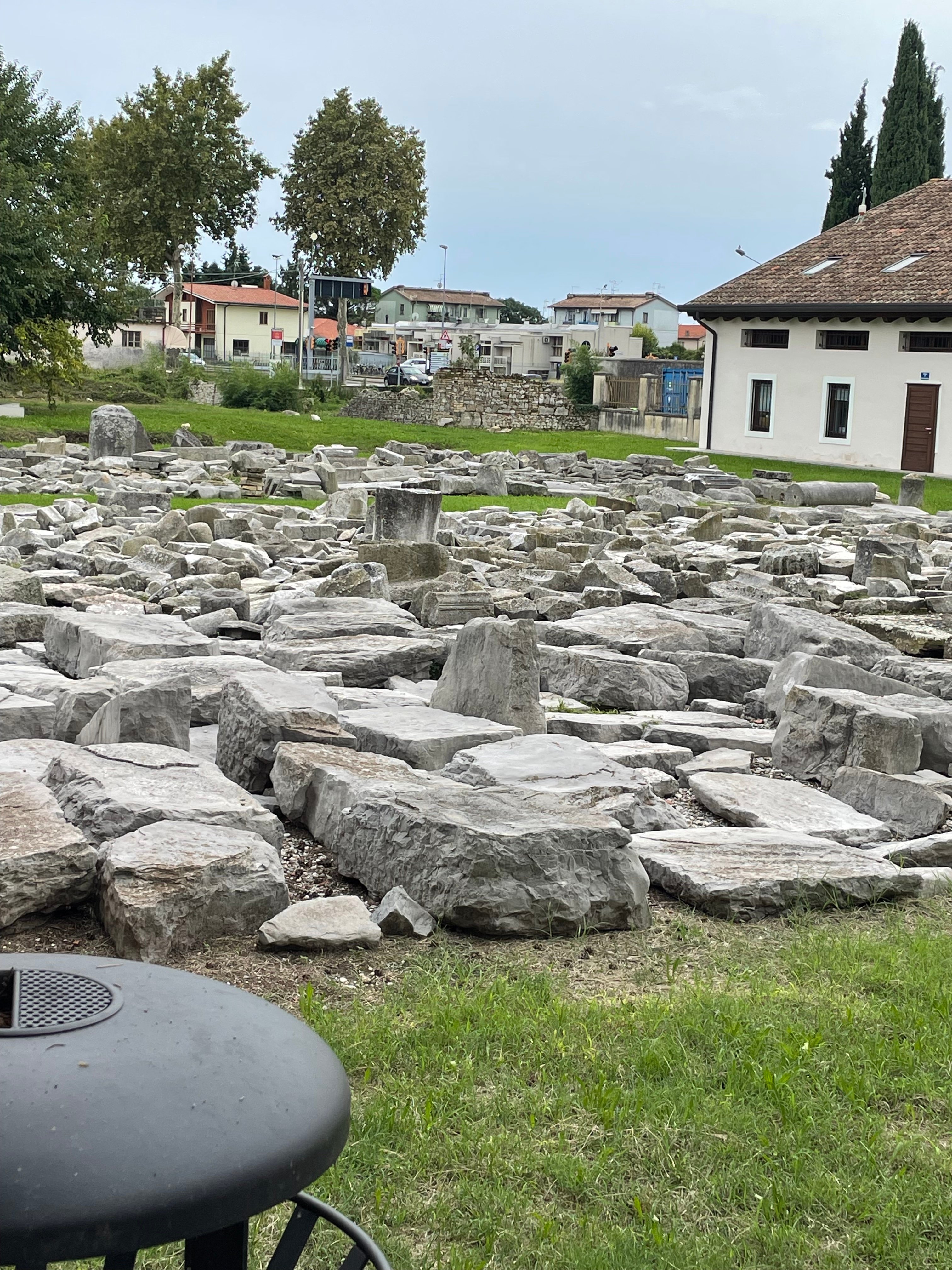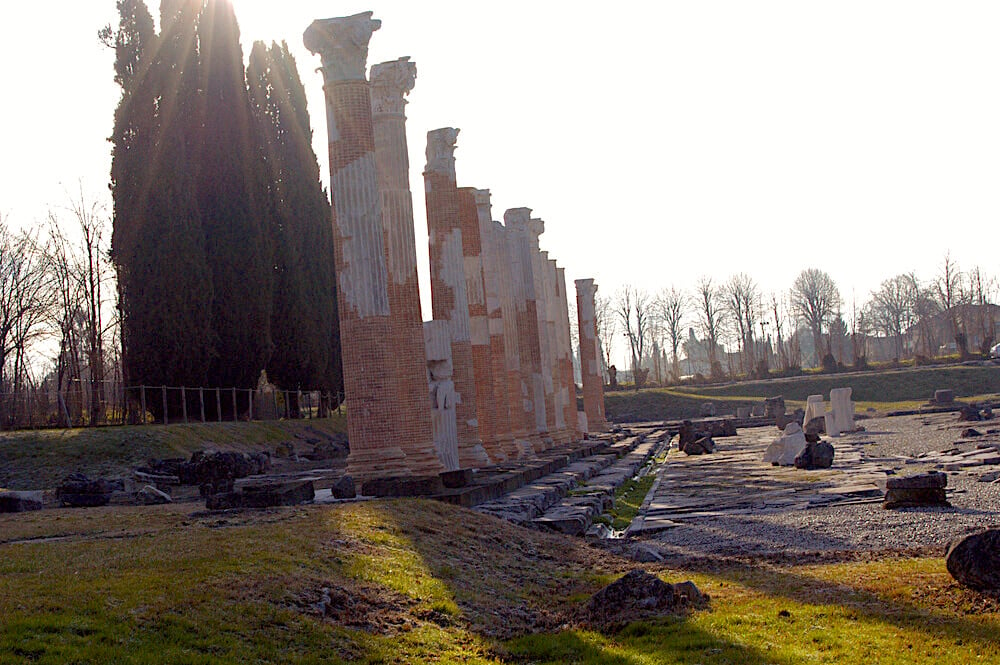A Pictorial Visit to the Ruins of Aquileia
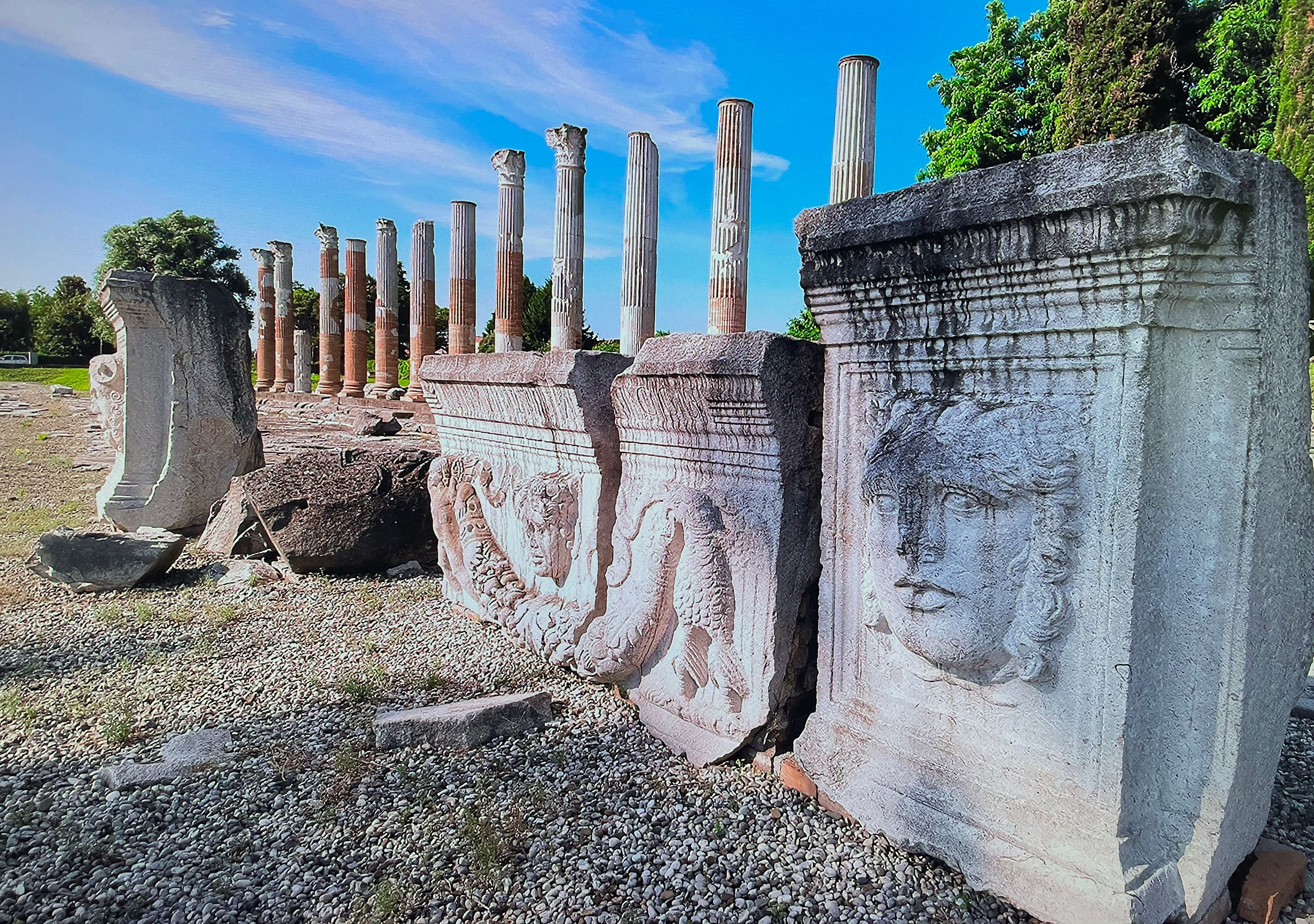
Aquileia was one of the most prosperous cities in the Roman Empire until it was destroyed by the Huns in 452 AD and almost completely abandoned. Archeological excavations in the late 19th century uncovered an astonishing array of artifacts that were collected at the site. We visited in September 2025. This is what we saw.
Strategically located at the head of the Adriatic Sea, Aquileia was a hub for trade and military operations. By the 2nd century AD it had a population of 100,000 people and was one of the largest cities in the Roman Empire. Great wealth streamed through its port. In the 5th century, as the Roman Empire declined, it proved too tempting a prize to escape the wrath of the Huns and was almost completely obliterated.
The Archaeological Area of Aquileia and the Patriarchal Basilica are part of a Unesco World Heritage site that includes The National Archeological Museum of Aquileia, a repository of over 5,000 artifacts that were excavated in the vicinity.
Among the artifacts in The National Archeological Museum of Aquileia is this statuary collection of ancient roman heads and bodies. So prevalent were the manufacture of these statues in the Roman era that the heads were made to be interchangeable with the bodies.
A stunning mosaic depicting the Phoenician princess Europa being carried by Jupiter in the form of a bull. This mosaic covers a whole wall in the The National Archeological Museum of Aquileia and measures about 8 feet x 12 feet.
The ruins of the river port at Aquileia. In Roman times the river flowed through here en route to the sea six miles away. Aquileia was one of the busiest seaports in the Roman world, and one of the richest.
The Domus (House) of Titus Macer, housed beneath this protective shed, is one of the largest ancient Roman urban houses in Italy, covering 5,000 square feet. Obviously, Titus Macer was quite wealthy and one of the most prominent citizens of Aquileia, but almost nothing is known about how he came to be so rich.
The remains of a Roman road that ran past the House of Titus Macer in Aquileia
Remains of the tablinum (the master's office) in the House of Titus Macer. The office would have had frescoed walls on three sides and the front would have opened onto the atrium, which would have been located in the foreground of this image and would have featured a mosaic floor and a decorative pool.
Aerial view of the 4th century Patriarchal Basilica of Aquileia with the campanile to its left. The Basilica was built during the reign of Constantine the Great in 313 AD. Photo by Carsten Steger.
The campanile (bell tower) of the Basilica of the Patriarchal Basilica of Aquileia with the traditional sculpture of the She-Wolf of Rome in front of it. The sculpture depicts the mythical she-wolf suckling the infant twins Romulus and Remus, the legendary founders of Rome.
Front view of the Patriarchal Basilica of Aquileia built a century and a half before the Fall of the Western Roman Empire. It boggles the mind to consider that Attila and the Huns marauded through here 150 years after it was built.
The mosaic floor of the Patriarchal Basilica. This 760 meter floor is the largest early Christian mosaic in the Western world. It features a pattern of Herakles Knots (regarded by Romans as good luck signs), checkerboards (representing order and harmony), and floral motifs (symbolizing renewal, beauty, and abundance).
The Crypt of the Frescoes is a shrine located beneath the altar of the Basilica. The walls and ceilings are covered with 12th century frescoes depicting the life of Christ.
Everywhere you turn in Aquileia you see these rubble strewn areas that are part of ongoing excavations at the site.
Twilight descends on a lost empire. Had the Huns not destroyed it Aquileia might have come down to us intact like Pompeii or Herculaneum. Instead, it has come down to us in pieces, the shattered remnants of a long lost metropolis that was once one of the richest cities in the world.
